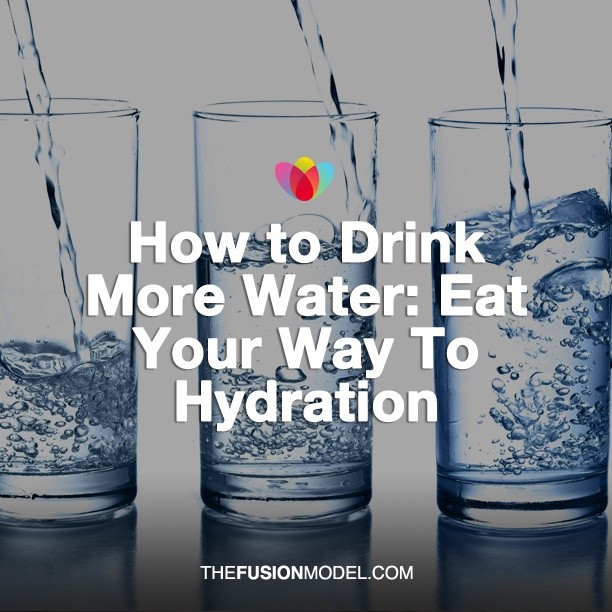Don’t get me wrong: I like water just fine. Consuming enough of it, however, has always been a challenge for me. Living at sea level meant that hydration could be a somewhat casual affair, but things got serious during a surf trip to Costa Rica: After days in the hot sun, dehydration bit me in the butt and I ended up semi-conscious in a clinic with three liters of saline solution mainlining into my veins. I then moved to a dry high-altitude desert town, and hydration became a life-or-death enterprise. I needed to find easy ways to hydrate.
Let’s start with some interesting facts: Our bodies are composed of up to 60 percent water. The brain is approximately 70 percent water, the lungs 90 percent and our blood 83 percent. Water helps control body temperature, digest food and transport waste and toxins out of the body, and it’s vital for the dispersion of minerals, nutrients and amino acids.
All of which makes it easier to understand why dehydration is such a serious affair. Without enough water, “you have more trouble focusing and processing information, and feel tired faster,” says Susan Yeargin, an assistant professor of physical education and athletic training at the University of South Carolina who holds a doctorate in kinesiology. “Exercise performance decreases — particularly aerobic exercise such as running, biking, etc. — and your heart has to work harder, as decreased blood volume leads to increased heart rate and decreased cardiac output. You also have trouble dissipating heat easily, and are predisposed to heat cramps and heat exhaustion.”
Athletes and weekend warriors need to pay close attention to hydration because exercise escalates the amount of water and minerals lost. “While exercising in the heat, males can sweat up to three liters an hour,” says Yeargin. “Females sweat approximately one liter an hour.”
OK, so we know it’s important to drink enough water — but how much is enough? “There’s no magic number,” says Yeargin. “Everyone is very different, and ‘eight glasses a day’ is a myth. People need to figure out their own individual fluid needs.” She suggests two ways of telling if your levels are low: “Thirst isn’t a perfect science, but most of the time, it’s reliable in adults,” she says. “If you’re thirsty, listen to your body.” In addition, pay attention to the color of your urine: clear or pale yellow, you’re good; bright yellow, you’re probably dehydrated; brown, you’re definitely dehydrated.
Sports drinks such as Gatorade can help you rehydrate in a pinch, but they contain additives and sugar you may not want to ingest. Electrolyte tablets (found at sporting goods stores) are a smart alternative; just add them to your water bottle, let them fizz and you’re good to go. Blogger Stephen Regenold writes, “The small tabs make getting sodium, potassium, magnesium and other performance enhancers into your system very easy.”
Here are some tips and tricks I use to make hydrating a no-brainer:
1. Lightly flavoring water by mixing in a splash of lemon or lime juice, or adding in an herbal teabag.
2. Using reusable bottles. I never run out of water because I can refill from any tap, and I avoid sending more plastic trash to landfills.
3. Syncing fluid intake with other activities. Before I brush my teeth, for example, I drink a glass of water. Before each meal, before and after a workout, I drink a glass of water. See where I’m going with this? My theory is that if I can make it routine, then I’m hydrating without even thinking about it.
To you floating happily on the H20 river, here are three more ways to get and stay hydrated:
Good: Make A Swap
Not all beverages hydrate equally, and those with large amounts of sugar can have a negative effect on our bodies. So cut back on the soda and fruit juice in favor of pure or lightly flavored water.
Better: Nosh On Hydrating Foods
Turns out that we can eat our water, too. While most hydration needs are met in liquid form, up to 20 percent of our daily intake can come from foods. “Eating a three-ounce cucumber is like drinking three ounces of water, but better,” physician Howard Murad, author of The Water Secret, told Runner’s World.
Here’s a handy list of some common foods and their water content:
- Cucumber — 96 percent
- Lettuce — 95 percent
- Celery — 95 percent
- Zucchini — 95 percent
- Tomato — 94 percent
- Spinach — 92 percent
- Watermelon — 92 percent
- Strawberries — 92 percent
- Broccoli — 91 percent
- Grapefruit — 91 percent
See more hydrating foods here.
Best: Make Hydration A Habit
The most effective way to solve a problem is usually the simplest. Make the process of drinking more water easier and more efficient, and you’ll drink more water with no muss, no fuss, right? To achieve this, purchase a reusable one-liter reusable bottle. You’ll reap two rewards: 1) You won’t need to refill it very often, and 2) It will be easy to track how much you’ve consumed. Squeeze in a fresh lime or toss in an herbal teabag, and your body and brain will thank you for the tasty hydration all day long.




